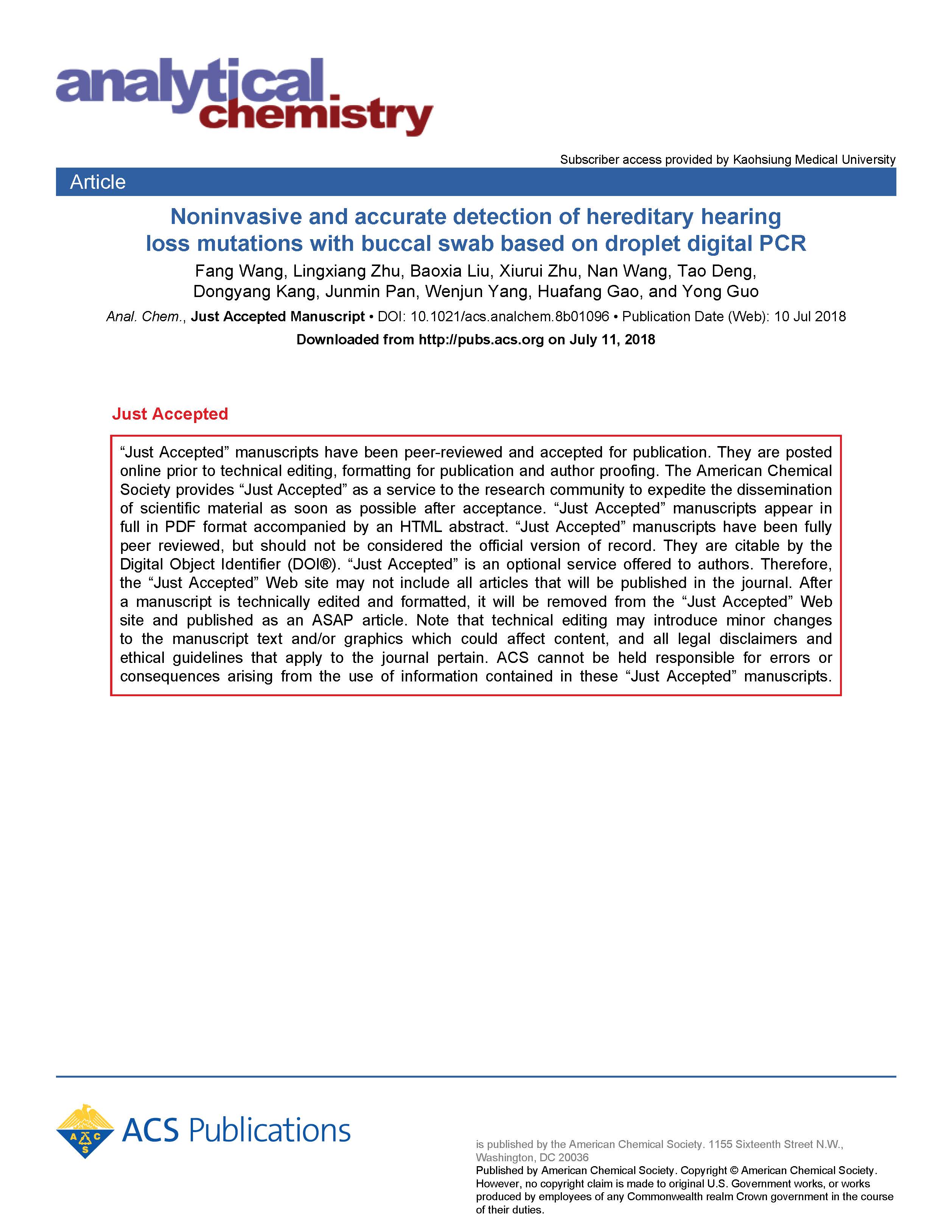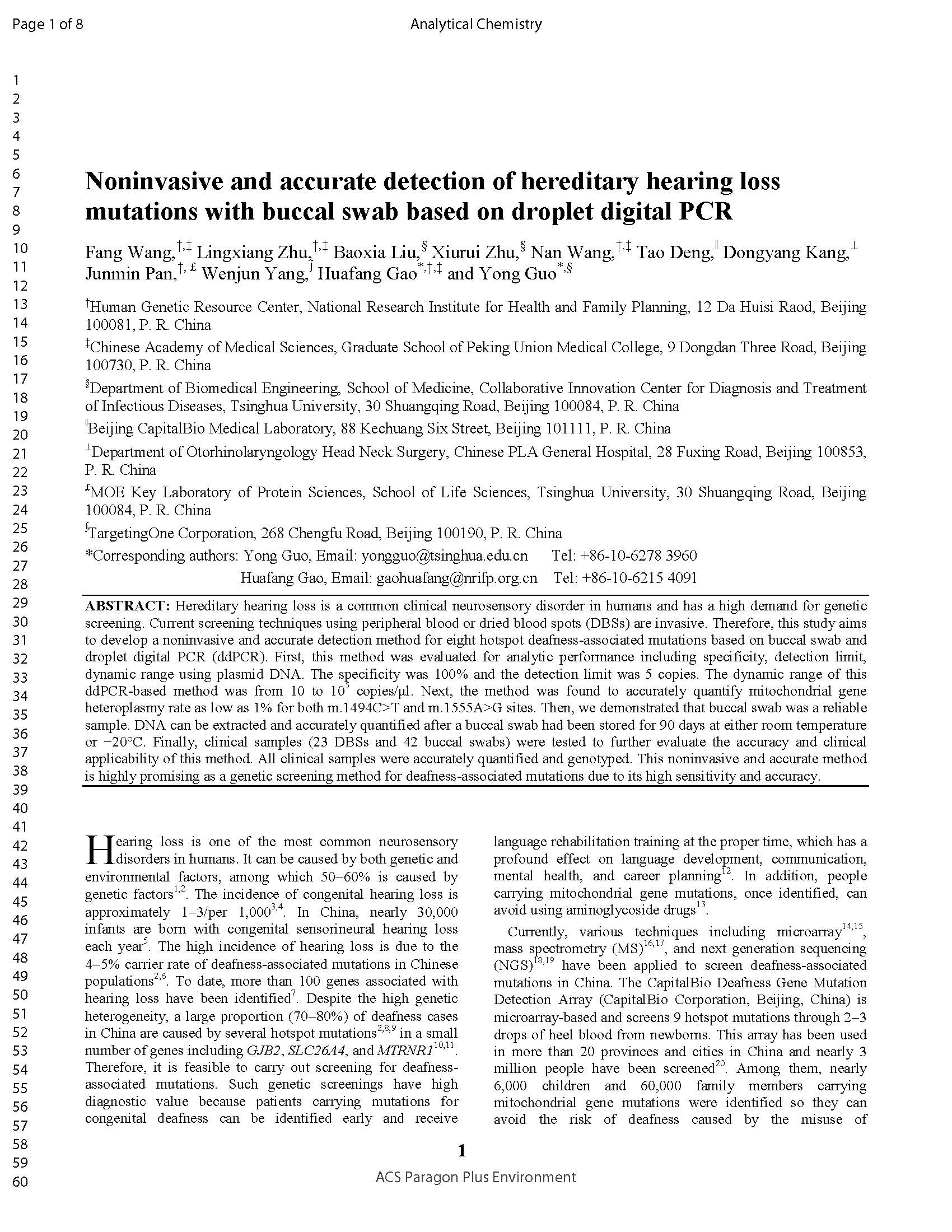release date:2018-07-10


Hereditary hearing loss is a common clinical neurosensory disorder in humans and has a high demand for genetic screening. Current screening techniques using peripheral blood or dried blood spots (DBSs) are invasive. Therefore, this study aims to develop a noninvasive and accurate detection method for eight hotspot deafness-associated mutations based on buccal swab and droplet digital PCR (ddPCR). First, this method was evaluated for analytic performance including specificity, detection limit, dynamic range using plasmid DNA. The specificity was 100% and the detection limit was 5 copies. The dynamic range of this ddPCR-based method was from 10 to 105 copies/µl. Next, the method was found to accurately quantify mitochondrial gene heteroplasmy rate as low as 1% for both m.1494C>T and m.1555A>G sites. Then, we demonstrated that buccal swab was a reliable sample. DNA can be extracted and accurately quantified after a buccal swab had been stored for 90 days at either room temperature or −20°C. Finally, clinical samples (23 DBSs and 42 buccal swabs) were tested to further evaluate the accuracy and clinical applicability of this method. All clinical samples were accurately quantified and genotyped. This noninvasive and accurate method is highly promising as a genetic screening method for deafness-associated mutations due to its high sensitivity and accuracy.
See all: https://pubs.acs.org/doi/pdf/10.1021/acs.analchem.8b01096